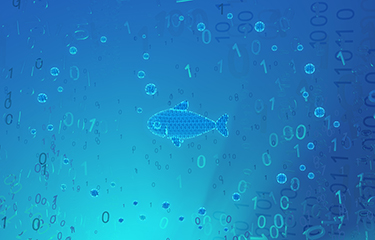Dozens of methods of documenting seafood traceability – and hundreds of individual systems – have emerged in recent years as companies across the seafood supply chain and the technology vendors that serve them seek to demonstrate the sustainable, legal origins of their products.
Rarely can those systems seamlessly interact with each other or share data, a gap that poses an ever-larger problem as regulators draft new traceability laws and consumers demand more information about the origin of their food.
That gap could soon be bridged.
The first iteration of global standards for seafood traceability, developed by the Global Dialogue on Seafood Traceability (GDST), were released 16 March after three years of business-to-business discussions convened by WWF and the Global Food Traceability Center at the Institute of Food Technologists. More than 70 companies have joined the dialogue or expressed support, including seven of the world’s 10 largest seafood companies.
"Just as technology is part of the solution, the incredible diversity and proliferation of technologies that are not interoperable is part of the problem," WWF Transparent Seas Project Senior Manager David Schorr, who plays a key role in the dialogue, told SeafoodSource.
Establishing basic technical standards so that systems can communicate with each other and achieve interoperability allows for thousands of producers, processors, packagers, traders, buyers, sellers, and retailers to share traceability data.
In recent years, even companies that were ahead of the curve on traceability – and wanted to tell customers detailed stories about the fish – ran into issues trying to convince their business partners at other stages of the supply chain to collect the data they needed. Mid-stream companies face an extra headache when different parties upstream or downstream from them demand different data.
"Even the biggest companies generally don’t always have enough market leverage by themselves, enough supply base, to make unilateral demands on distant producers who also sell to many other customers" Schorr said.
The standards are needed as both governments and consumers are increasingly demanding better traceability information.
“We are facing increasing customer expectations. They simply expect that we know where our product comes from,” Metro AG Head of Corporate Responsibility Britta Gallus, who is also co-chair of the GDST steering committee, said during a webinar announcing the release of the GDST 1.0 standards.
The standards define both the key data elements that should be linked to seafood products as they move through every step in the supply chain, and the precise way that data should be packaged to allow it to be easily shared. For instance, there are multiple different ways to list a port code and without a singular defined method computers will get confused. The standards also indicate possible verifiable data sources, such as a vessel's licensing authority.
"When you say catch area, what do you mean precisely?” Schorr said. “When you say vessel identification, what do you mean precisely? What's the data field supposed to look like? Is it an alpha-numeric field? How many characters? And what are the authoritative sources of data?”
The key data elements were selected to demonstrate legality of a product through the supply chain; Scientists conducting stock assessments will likely want additional information, as might regulators conducting rigorous electronic monitoring, Schorr said.
The GDST 1.0 standards will integrate with the GS1 standards, but users won't be required to buy into the GS1 ecosystem, according to Schorr. Open source and non-proprietary, the standards are meant to be useful for all kinds of companies, from the largest multinational to small-scale fisheries, most of whom go on the water with their phones.
"The technologies are there to bring digital data capture to even the small-scale fishers," Schorr said. In some cases, the first digital use case may be the first processor or aggregator. "There's a big lift to do there and a big transition. Small-scale fishers are going to need support and they're going to need time."
As an industry-led initiative, the standards reflect the actual problems they want to solve, such as feeding data directly into consumer-facing labeling, integrating with GS1 systems, communicating with blockchain-based systems, or getting information from a small-scale vessel. GDST even hosted three hackathons to solve technical problems, along with a dozen pilot projects.
Many companies that develop traceability technology solutions support the standards, which essentially create a pre-competitive baseline for their products. The standards — and the many pages of technical details associated with them — will make it possible for data to be shared from app to app, platform to platform, while making it easier for software engineers to create applications that push and pull that data.
Uniform data standards are crucial for blockchain, artificial intelligence, and machine learning applications that could eventually be used to help processors anticipate yields and allow retailers to predict freshness, according to This Fish CEO and Co-Founder Eric Enno Tamm.
“We now have a common language to talk about the data,” Tamm said during the webinar. This Fish is one of 18 seafood traceability providers that has signed support for the standards.
More work needs to be done with the standards, which are only in their first iteration, including how to verify that the claims made in the data are indeed genuine and not false. Whole Foods Market Principal Quality Standards Advisor for Seafood Carrie Brownstein suggested that a certification of traceability providers could help verify the traceability claims in the future.
“If you require all this data and you require the data in a certain format and you require interoperability, how do you verify that the data being put in is good data, and it’s not garbage in, garbage out data?” Brownstein said during the webinar. “You have to have a way of verifying that kind of claim so your customers trust you.”
Photo courtesy of higyou/Shutterstock







